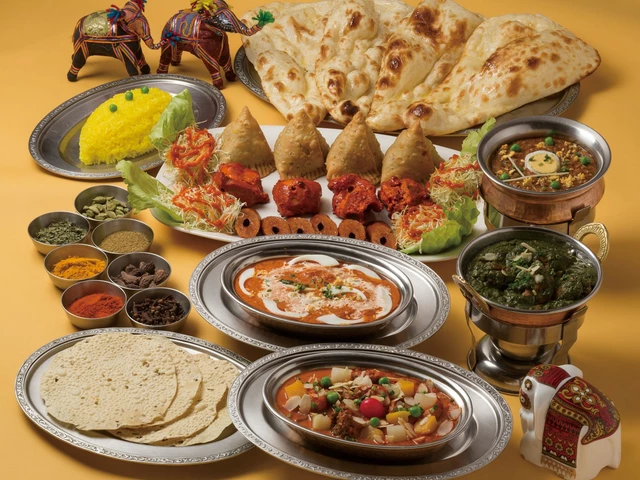Exploring the Pros and Cons of Living in India
India is a beautiful country with many different cultures, languages, and landscapes. It is one of the most populous countries in the world, and it has a booming economy with great potential for its citizens. However, like any country, India has its drawbacks. Let's take a look at some of the pros and cons of living in India.Pros of Living in India
- Low cost of living: India is one of the most affordable countries to live in as far as the cost of living is concerned. It is possible to get a good quality of life without spending too much money.
- Cultural diversity: India is a melting pot of many different cultures and religions. This makes it a fascinating place to explore and learn about.
- Plenty of job opportunities: India has a rapidly growing economy and there are plenty of job opportunities available for those who are willing to work hard.
- Excellent transport infrastructure: India has an excellent transport infrastructure and it is easy to get around the country.
- Tropical climate: India has a tropical climate, which makes it ideal for those who enjoy warm weather.
Cons of Living in India
- High levels of pollution: The levels of air and water pollution are very high in India, which can have an adverse effect on health.
- Poor sanitation: The sanitation in India is poor, which can lead to a variety of health issues.
- Income inequality: India has one of the highest levels of income inequality in the world, which can lead to social unrest.
- Poor healthcare: The healthcare system in India is inadequate and overstretched, making it difficult to get proper medical attention.
- Corruption: India is plagued by corruption, which can make it difficult for people to get ahead in life.
Examining the Challenges of Living in India
India is an ancient and diverse country that has a rich history and culture. It is home to many ethnicities, religions, languages, and customs. With 1.3 billion people, it is the second most populous country in the world. India is also home to some of the world’s most amazing sites, from the Taj Mahal to the Himalayas. However, India has its drawbacks, and many of them are related to the country’s growing population. With so many people, resources are stretched thin, leading to problems such as overcrowding, inadequate housing, and lack of access to basic services such as health care and education. Living in India can also be challenging for those who do not speak the language. English is widely spoken in urban areas, but in rural areas it may be difficult to get by without a basic understanding of Hindi or one of the other local languages. In addition, English is not the official language of India, and many government documents, forms, and instructions are written in Hindi. The cost of living in India is also quite low, which can be both a blessing and a curse. While it is possible to live on a budget, it can also be difficult to make ends meet, especially in cities where the cost of living is higher. Finally, India has a history of gender discrimination, and women are often not given the same rights and opportunities as men. This can make life difficult for women, as they may not have access to the same educational and career opportunities that their male counterparts do. Overall, living in India can be a rewarding experience, but it is important to be aware of the potential drawbacks before making the move. It is important to do your research, be prepared, and make sure you have the resources and support you need to make your life in India as successful as possible.India is a country of rich culture and history, but it also has its share of drawbacks. Although India is home to 1.3 billion people and is considered to be the second most populous country in the world, it still has many issues that make living there difficult. From air pollution to poor infrastructure, here are some of the major disadvantages of living in India.
Air Pollution
Air pollution is one of the biggest issues facing India. According to the World Health Organization, 14 cities in India figured in the list of the world’s 20 most polluted cities. The air quality in India is one of the worst in the world, with particulate matter (PM2.5) levels reaching up to 20 times higher than the safe limits. This air pollution poses a serious threat to the health of the people in India, leading to a range of health problems such as respiratory diseases, asthma, and cancer.
Poor Infrastructure
The infrastructure in India is also very poor. Basic services such as water, electricity, and sanitation are often unreliable or simply unavailable. Roads are often congested and in disrepair, making transportation difficult. In addition, India has a huge housing shortage, with millions of people living in slums.
Poverty
Poverty is also a major issue in India. According to the World Bank, nearly 21% of the population lives below the poverty line. This means that millions of people are unable to afford basic necessities such as food and shelter. Additionally, India has a high rate of illiteracy and a lack of access to healthcare, both of which contribute to the overall poverty levels in the country.
Gender Inequality
Finally, India is also known for its gender inequality. Women in India face discrimination and are often treated as second-class citizens. This is especially true in rural areas, where women are more likely to face harassment, physical abuse, and even sex trafficking.
Living in India can be difficult, but with the right attitude and determination, it's possible to rise above these drawbacks and make the most of the opportunities available.





